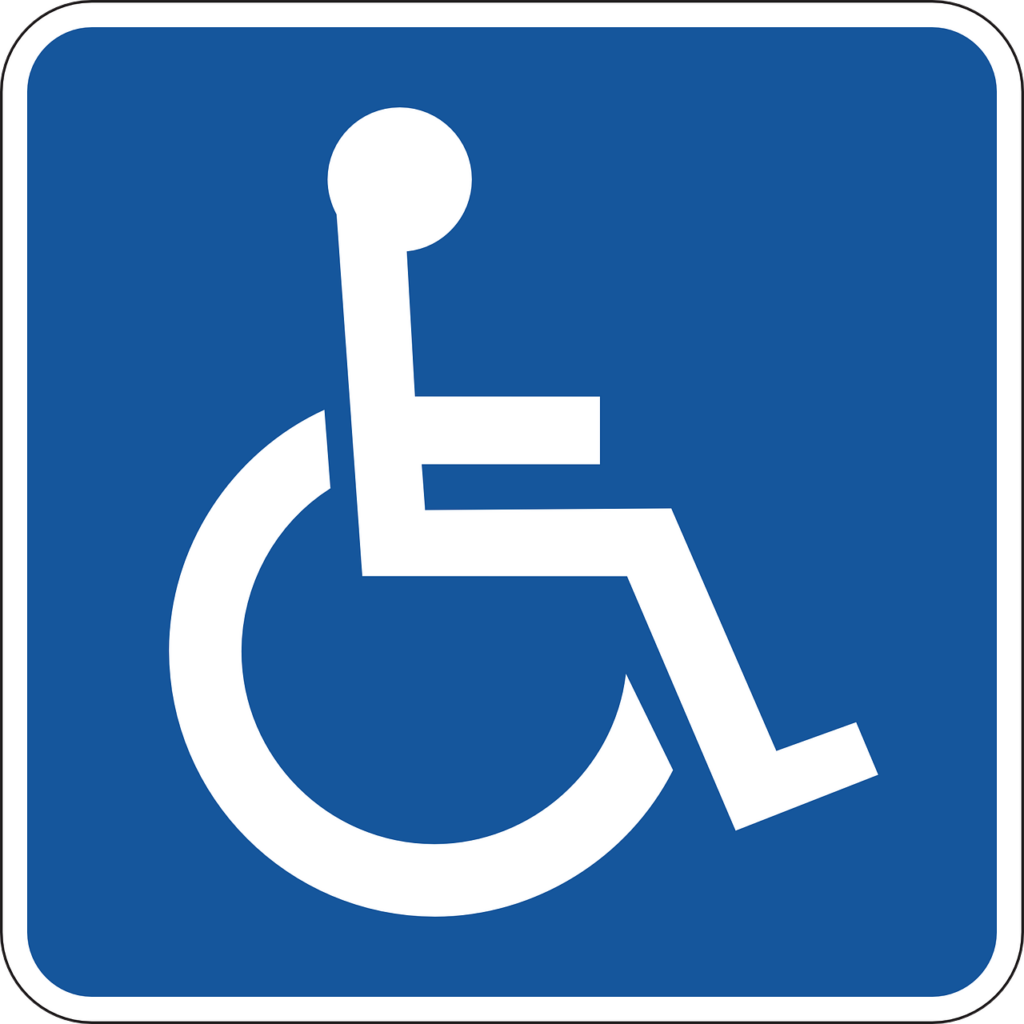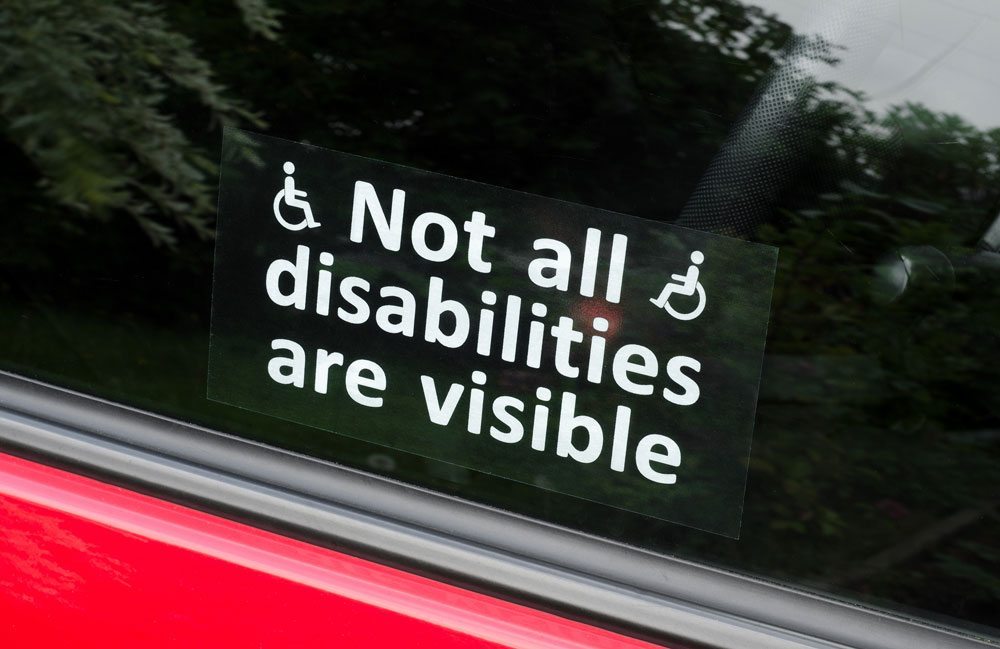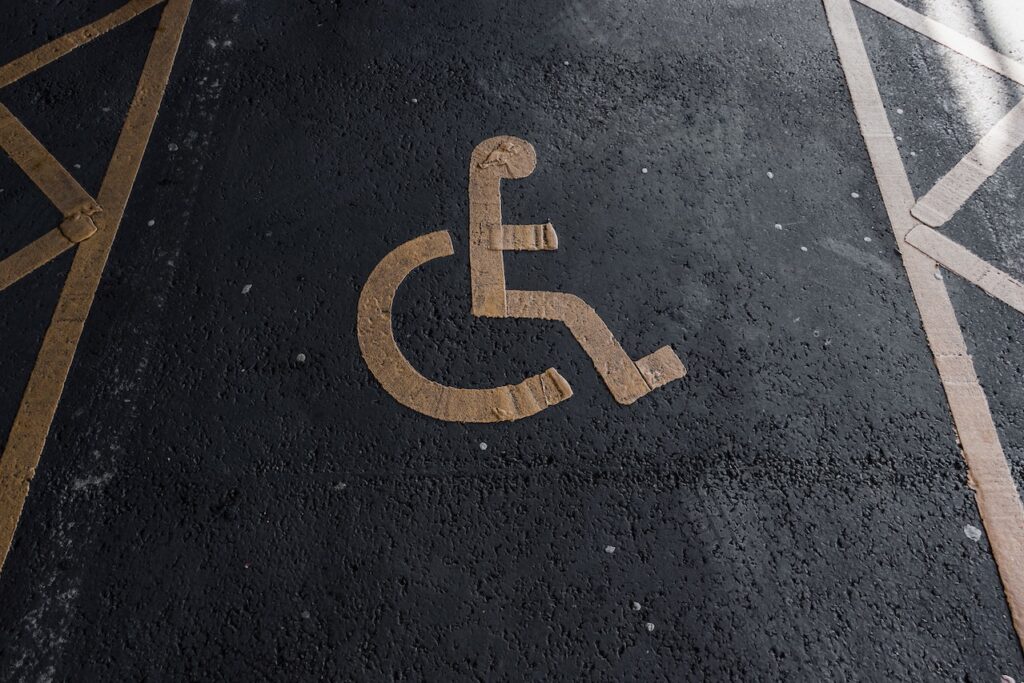Have you ever seen someone using an accessible parking space and suspected they were cheating the system? Did you know that many disabilities are invisible and have no obvious external signs? That’s a big reason why people with invisible disabilities experience harassment despite having an accessible parking permit.
People with disabilities that aren’t obvious at face value often experience persecution and discrimination from those who assume they’re misusing accessible bays and parking illegally. This harassment can cause serious distress for those living with debilitating illness.
Learn more here…
In this article
But you don’t ‘look’ disabled
We’ve all seen the international symbol for disability printed/signed on every accessible parking space. It’s a little stick figure in a wheelchair, showing everyone that a space is reserved for people who live with disability.
The only problem is, not everyone with a disability looks like that stick figure. Most notably, not all use wheelchairs and many don’t ‘appear’ to have mobility challenges at all.
Whether you’ve said to someone or been told yourself that “You don’t ‘look’ disabled“, give this article a read.

What is an invisible disability?
An invisible disability, as the name suggests, is a disability that can’t be easily seen by others. Although they may appear to be free of health issues at first glance, people with invisible disabilities often live with symptoms like pain, fatigue, balance problems, cognitive or mental dysfunction, vision and hearing impairments, and/or more.
Very often, invisible disability affects mobility.
Some invisible disabilities fluctuate, meaning someone may be able to walk one day then require mobility equipment the next. People with invisible disabilities often experience discrimination from people who don’t believe they’re disabled and from other people with disability who envy their ability to ‘pass’ as someone who doesn’t.
Accessible parking permits for invisible disabilities
People with invisible disabilities may require accessible parking permits for several reasons.
Accessible spaces are located close to key infrastructure and facilities; this allows shortened walking times and sometimes access to hired mobility scooters and wheelchairs. It avoids prolonged exposure to heat, cold and exhaust fumes and allows people to use their limited energy on their chosen activity, not on getting to and from the car.
The close proximity of accessible parking also limits exposure to hazards such as traffic and uneven footpaths.
Accessible parking spaces are also wider than average, allowing extra room for people with limited or unpredictable movement or who need assistance to get in and out of the car. Read our article: Accessible Parking Spaces: Designed to Help to find out more about this.

Discrimination, abuse and invisible disabilities
Sadly, people with invisible disabilities often face obvious verbal harassment from people who assume they’re cheating the system. They also often face more subtle forms of discrimination when parking. These might include being stared at or hearing people make rude comments about them under their breath.
In our recent Invisible Disabilities Week Survey we’ve linked to below, 74% of respondents said they had been verbally harassed or insulted for not ‘looking disabled’ when using a parking bay.
Shockingly, 21% had encountered physical abuse for not ‘looking disabled’ when using accessible parking.
Discrimination can cause very real effects on the lives of people with invisible disabilities, making them feel self-conscious, unsafe, or guilty for using the facilities they’re entitled to. These feelings can in turn lead to an unwillingness to go out, increased social isolation, anxiety and depression.
Invisible disability discrimination statistics
The following articles document some of the personal accounts of unfair treatment that Australians with invisible disabilities have experienced in the parking lot:
- Invisible Disabilities Week – Parking Harassment
- Invisible Disabilities Week Australia – In Their Words
- Invisible Disabilities Week Survey Results
Lots of Australians live with invisible disabilities – it’s important to always keep this in mind. Avoid judging a book by its cover because you often can’t see on the outside what’s happening on someone’s inside. The best you can do is to be sensitive, empathetic, respectful and kind to everyone.

Guide to common invisible disabilities
Living with an invisible disability can be an uphill battle. Whether it’s battling fatigue, dealing with unpredictable pain, or grappling with anxiety attacks, individuals with invisible disabilities face unique hurdles every day.
There are so many conditions that may cause invisible disabilities. Here are some to give you an idea:
- Epilepsy
- ADHD
- Cancer
- Autism
- PTSD
- Anxiety
- Back injuries
- Brain injuries
- Chronic illness
- Chronic pain
- Diabetes (here’s more on driving with diabetes)
- Heart conditions
- Muscular disorders
- Neurological disorders
- Recent surgery
One of the most significant challenges individuals with invisible disabilities face is the ‘mask of smiles’. They often feel pressured to hide their struggles and put on a happy face, fearing judgment or disbelief from others. This stigma can lead to isolation and a lack of support, which further compounds the difficulties they face.
Awareness and empathy can make a world of difference.

Who can park in an accessible space?
Australia has strict regulations outlining who can hold a disability parking permit. Accessible parking permit holders have all completed detailed forms that’ve been authorised by their doctors and approved by their local transport authority.
- Drivers with a disability parking permit. Basically, displaying a disability parking permit is proof that a person is eligible to use an accessible space, no matter what they look like.
- Passengers with a disability parking permit. Legally, individuals without disabilities may also park in accessible parking spaces if stopping to pick up someone who has a disability. In this case, they must display the accessible parking permit of the person with a disability.
Remember, not everyone who’s eligible to use accessible parking is obviously living with disability. Anyone displaying a permit has already proven their eligibility and demanding further proof is harassment.

Staying safe while parking with invisible disabilities
Do you have an invisible disability? Have you ever experienced harassment or felt unsafe while parking? There are a few things you can do to protect yourself.
Option 1 for staying safe
If someone confronts you, do not engage or argue with them or you could unintentionally get yourself into dangerous situation. You don’t have to tell them anything about your disability; that’s private information between you and your doctor. You don’t need to prove yourself.
Actively ignoring the person – purposely not paying attention to this kind of behaviour – can make them go away. It also doesn’t fuel their fire.
Option 2 for staying safe
If you feel you will remain safe because the person isn’t approaching with any real hostility, you may wish to make a short comment like “I have a legal permit”.
Or, perhaps take the chance to educate, with “I am living with disability others often can’t see but it makes accessing places very difficult for me. Thank you for your concern for people with disability.”
If it escalates
If you’re followed or harassed, make your way inside to the nearest building. Explain your situation to a staff member and, if necessary, ask them to call security or the police. If someone leaves a nasty note on your car, be sure to take a photo of it to provide proof of what happened.
Finally, if you repeatedly face problems in a specific area, you may like to raise awareness of the issue by contacting your local newspaper. Many people misguidedly think they’re helping disabled people by calling out parking “cheats” and may reconsider their actions once they realise that invisible disabilities exist.

Stay protected with Blue Badge Insurance
As Australia’s first disability and independence insurance specialist, Blue Badge Insurance understands the disability landscape. For many years we’ve been providing people with disability with insurance cover for wheelchair accessible vehicles and disability converted cars and mobility equipment, like wheelchair insurance, as well as pet insurance for companion animals and Assistance Dogs insurance.
It’s all about protecting the things that keep those living with mobility challenges as independent for as long as possible. Why not take a couple of minutes to get a quote about protecting your important vehicle and/or equipment?








